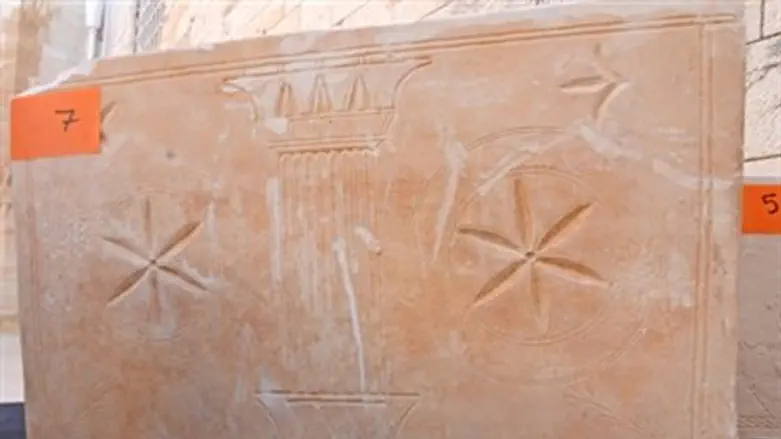
The Antiquities Authority and police cooperated last Friday to arrest suspects who allegedly stole ornate stone ossuary burial chests, which were used by Jews in Israel during the Second Temple period roughly 2,000 years ago.
The suspects were caught while in possession of eleven ossuaries, some of them still containing skeletal remains.
The suspected grave robbers, who were arrested and brought in for questioning, came from the Arab village of Abadiyah in Judea, located near Bethlehem, as well as from Jerusalem and Tel Aviv. They were caught while closing a deal to sell the ossuaries to Jewish merchants by the Hizma checkpoint north of Jerusalem.
The arrest was carried out by the Antiquities Authority's Unit for the Prevention of Antiquities Robbery, along with officers from the Shefet police station in Jerusalem.
The ossuaries are thought to have been looted from an ancient burial cave near Jerusalem, and feature typical Jewish symbols of the Second Temple period, such as the lily flower. They were commonly used by Jews from the 2nd century BCE until the 1st century CE.
"Ralfin" and "Yo'azar"
Two of the ossuraies feature engravings listing the names of the deceased whose bones were interred in them. One name, appearing in a rounded Hebrew script common in the Second Temple period, is "Yo'azar," a common Jewish name from that time period.
The other name reads "Ralfin" in a similar Hebrew script.
Dr. Eitan Klein, deputy director of the Unit for the Prevention of Antiquities Robbery, examined the ossuaries and noted “this is the first time this name (Ralfin) appears on an ossuary from the Land of Israel," suggesting it may have been a Hebrew-form of an unusual Roman name.
"These are singular finds," remarked Klein. "The inscriptions on the ossuaries provide us with additional characters and names from amongst the Jewish population in the Second Temple period, and the motifs adorning the ossuaries will supplement our knowledge with new information about the world of Jewish art in this period."
The bone remains were turned over to the Ministry of Religious Affairs for proper burial.
Antiquities robbery holds a five year jail sentence, while trafficking in antiquities holds a three year sentence. There have been numerous cases of Arab looters robbing antiquities from ancient graves in recent years.
The destruction of Jewish antiquities on the Temple Mount by the Jordanian Waqf (Muslim Trust) has also been an ongoing problem plaguing the archaeological world in Israel.